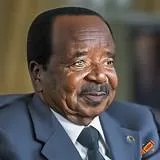
Supporters of Cameroon’s President Paul Biya have resorted to using his portrait as the centerpiece of his re-election campaign for the October 2025 presidential polls.
At 92 years old, Biya’s advanced age and frequent private trips abroad have severely limited his public appearances, leaving his image to stand in for him on the campaign trail.
The unusual sight of campaigning with portraits has fueled speculation about his health and drawn comparisons to fictional scenarios where a leader remains in power despite being visibly absent.
Biya currently holds the record as the world’s oldest head of state and is Africa’s second-longest-serving leader.
For years, his health has been the subject of quiet debate, especially whenever he disappears from public view for extended periods, often while in Geneva, Switzerland. Yet, such discussions remain tightly controlled.
The ruling Cameroon People’s Democratic Movement (CPDM), which dominates state media, has banned public talk about the president’s health, declaring it a matter of national security.
Campaigning on Biya’s behalf is largely managed through social media and official statements coordinated by his cabinet.
His inner circle remains committed to securing his re-election, a strategy widely seen as a way to prevent a destabilizing power struggle within the ruling party. With no clear successor in sight, many Cameroonians—particularly younger citizens—feel politically sidelined and voiceless.
The president’s prolonged stay in power has fueled frustration among opposition figures and ordinary citizens alike. Critics argue that his advanced age and long absences have slowed down the nation’s development and weakened democratic governance.
Biya’s decision to contest again has also triggered cracks within his once-loyal base. Some former allies and ministers have broken away, declaring their intention to run against him. Adding to the tension, his daughter, Brenda Biya, reportedly took to social media to call on citizens not to re-elect her father, openly criticizing his decades-long grip on power.
The reliance on portraits rather than the president himself to drive the campaign underscores his role as what many now call an “absentee president.” It also reflects the tightly controlled political climate that has enabled him to cling to power for decades, even with limited public presence.
 Premium News
Premium News